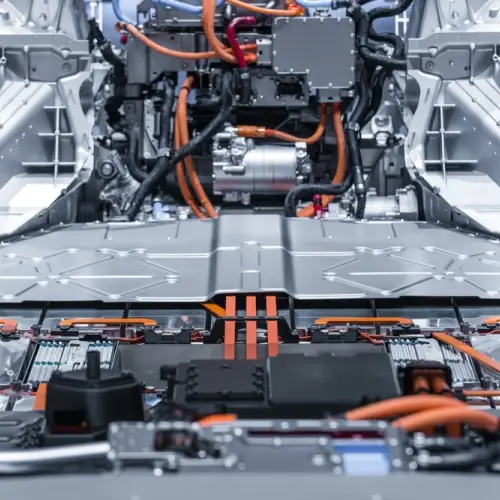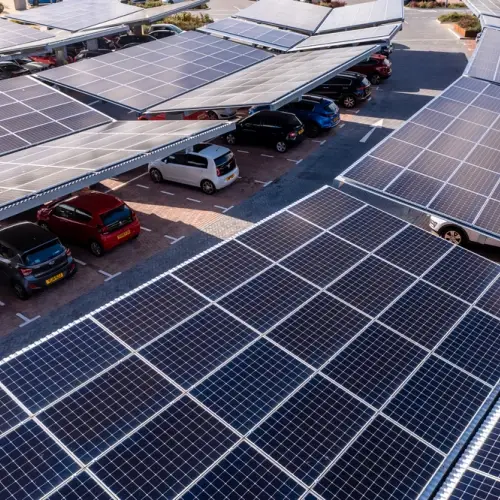
The question of whether electric vehicles (EVs) or internal combustion vehicles pollute more has gained relevance in recent years, especially as awareness of climate change and air pollution has increased.
With the rise of electric vehicles, it is essential to analyse not only the emissions generated during their use, but also to consider the environmental impact of their production and the entire life cycle.
Throughout this article, we will explore the different aspects of this comparison, breaking down the factors that influence the carbon footprint of both types of vehicles.
The production
Emissions from the manufacture of electric vehicles
Producing an electric vehicle involves a number of complex processes that generate significant emissions, especially in battery manufacturing. Lithium-ion batteries, which are the most common in electric vehicles, require the extraction of metals such as lithium, cobalt and nickel.
This extraction process often takes place in countries where environmental regulations are lax, which can result in serious environmental damage and high carbon footprints.
In addition, battery manufacturing consumes large amounts of energy. A European Union study estimates that the production of a 60 kWh battery, which is typical in many electric vehicles, generates around 150 to 200 kg of CO₂.
This figure is considerable, and many analysts warn that if the energy used for manufacturing comes from fossil sources, emissions could be even higher.
Emissions from the manufacture of combustion vehicles
 Internal combustion vehicles also have an environmental impact during their production, although this is usually lower compared to electric vehicles. The manufacture of these vehicles involves fewer components that generate large amounts of emissions, since they do not require large batteries.
Internal combustion vehicles also have an environmental impact during their production, although this is usually lower compared to electric vehicles. The manufacture of these vehicles involves fewer components that generate large amounts of emissions, since they do not require large batteries.
However, emissions still occur during the production of the engine, chassis and other components.
A study by the World Resources Institute suggests that the carbon footprint of producing a combustion vehicle is lower than that of an electric vehicle, but this difference is narrowing as technology in the manufacturing of electric vehicles advances and more sustainable practices are adopted.
Emissions during use: a remarkable contrast
Electric vehicles
One of the biggest benefits of electric vehicles is that they do not emit any direct pollutants during operation. This means that they do not generate carbon dioxide (CO₂), nitrogen oxides (NOx) or fine particulate matter, which are harmful to human health and the environment.
However, the amount of indirect emissions generated during use depends largely on the energy source used to charge them.
If electric vehicles are charged with electricity from renewable sources, such as solar or wind, their emissions can be practically zero.
According to a report by the International Council on Clean Transportation (ICCT), an electric vehicle charged with 100% renewable electricity can have significantly lower lifetime CO₂ emissions than a combustion vehicle.
On the other hand, if the electricity used to charge an electric vehicle comes from coal or natural gas plants, indirect emissions can be significant.
An analysis of Life Cycle Greenhouse Gas Emissions from Plug-In Hybrid Electric Vehicles by the U.S. Department of Energy indicates that while electric vehicles are cleaner, their environmental impact can be affected by the electrical grid in the region where they are used.
Combustion vehicles
 Internal combustion vehicles, on the other hand, generate emissions directly every time they are in operation. Every litre of petrol burned produces approximately 2.3 kg of CO₂, as well as releasing other pollutants that contribute to poor air quality and climate change.
Internal combustion vehicles, on the other hand, generate emissions directly every time they are in operation. Every litre of petrol burned produces approximately 2.3 kg of CO₂, as well as releasing other pollutants that contribute to poor air quality and climate change.
Depending on the type of fuel and engine efficiency, emissions can vary, but in general, combustion vehicles are responsible for constant and harmful emissions during use.
Air pollution from combustion vehicles is also linked to public health problems. Studies have shown that exposure to high levels of NOx and fine particulate matter can lead to respiratory and cardiovascular diseases and other health problems.
This is a strong argument in favor of transitioning to cleaner alternatives, such as electric vehicles.
Life cycle: a comprehensive approach
When assessing which of the two types of vehicles pollutes more, it is crucial to consider the full life cycle, which includes the production, use and final disposal of each vehicle. This analysis allows for a more complete understanding of their environmental impact.
Life cycle of electric vehicles
 Electric vehicles, while they may have a higher carbon footprint in their manufacture, tend to offset this over their lifetime.
Electric vehicles, while they may have a higher carbon footprint in their manufacture, tend to offset this over their lifetime.
In general, as they are used, their emissions are much lower than those of combustion vehicles. This is especially true if they are charged with renewable energy sources.
A study by the University of Michigan found that over its lifetime, an electric vehicle can generate up to 60% fewer CO₂ emissions compared to an internal combustion vehicle.
As the power grid becomes greener and cleaner battery technologies are adopted, this figure will continue to improve.
Life cycle of combustion vehicles
On the other hand, combustion vehicles generate constant emissions throughout their lifespan. Although their production may have a lower initial impact, the fact that they continue to emit pollutants during their operation means that, in terms of life cycle, their carbon footprint accumulates over time.
In addition, recycling and disposal of combustion vehicles present their own challenges. Components of these vehicles, including oils, filters and batteries, can be polluting if not managed properly.
In comparison, electric vehicles are beginning to implement better recycling practices for batteries, which may mitigate some of the negative impacts.
Additional factors to consider
Energy efficiency
 Electric vehicles are generally more efficient than internal combustion vehicles.
Electric vehicles are generally more efficient than internal combustion vehicles.
On average, an electric vehicle converts about 60% of the grid's electrical energy into energy that propels the vehicle, while an internal combustion vehicle converts only about 20% of the energy contained in gasoline into motion.
This increased energy efficiency reduces emissions per kilometer traveled.
Progress in technology
Electric vehicle technology and renewable energy infrastructure are advancing rapidly. Improvements in battery capacity, efficiency in power generation, and expansion of charging infrastructure are helping to make electric vehicles increasingly sustainable.
As more electric cars enter the market and renewable energy sources are integrated into the power grid, the carbon footprint of electric vehicles will continue to decline.
Impact on public health
The use of electric vehicles also has additional benefits in terms of public health. By eliminating direct emissions from vehicles, air quality in cities can be improved, which in turn can reduce health problems such as asthma, respiratory diseases and other pollution-related disorders.
This benefit is not always quantified in emissions studies, but it is an important factor to consider when assessing the environmental impact of different types of vehicles.
Conclusion
In short, although the manufacturing of electric vehicles has a considerable environmental impact, especially in terms of battery production, their use throughout their lifespan tends to be much cleaner compared to internal combustion vehicles.
If electric vehicles are charged with renewable energy sources, their CO₂ emissions can be practically zero. On the other hand, combustion vehicles generate constant and harmful emissions throughout their lifetime, making them a less sustainable option in the long term.
As technology advances and the use of clean energy expands, the difference between the two types of vehicles is likely to become even more pronounced.
The transition to electric vehicles is not only a step towards a cleaner and more sustainable future, but also represents an opportunity to improve the quality of life in our cities and reduce the public health risks associated with air pollution.
Ultimately, the choice between an electric vehicle and a combustion vehicle will depend on several factors, including the availability of charging infrastructure, the type of energy used and personal preferences.
However, it is clear that in the context of climate change and the need to reduce emissions, electric vehicles represent a more promising path towards a more sustainable future.